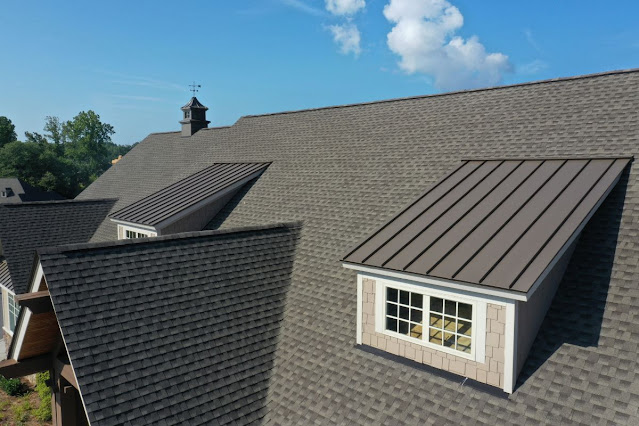The Anatomy of a Roof: Exploring the Key Parts and Their Functions
Introduction
A well-constructed roof is essential for any building, providing protection from the elements and contributing to the structure's overall stability. Understanding the various parts of a roof can help homeowners and builders ensure proper maintenance and durability. In this detailed guide, we'll explore the critical components of a roof and their unique roles.
The Essential Parts of a Roof
1. Rafters and Trusses
Rafters and trusses are the skeletal framework of a roof, forming the base on which all other components are built.
Key Functions:
- Support: Provide structural support for the roof deck and covering.
- Shape: Determine the roof's shape and slope.
- Load Distribution: Distribute the weight of the roof evenly across the walls of the building.
2. Roof Decking (Sheathing)
The roof decking, or sheathing, is a layer of boards or panels attached to the rafters or trusses.
Key Functions:
- Foundation: Acts as the foundation for the underlayment and roofing materials.
- Stability: Provides structural stability to the roof.
- Protection: Helps prevent sagging and keeps the roof materials in place.
3. Underlayment
Underlayment is a protective layer installed between the roof decking and the outer roof covering.
Key Functions:
- Waterproofing: Provides a waterproof barrier to protect against moisture infiltration.
- Secondary Defense: Serves as a second line of defense against weather elements.
- Temperature Regulation: Helps regulate temperature within the roofing system.
4. Roof Covering
The roof covering is the outermost layer, made of materials such as shingles, tiles, metal panels, or slate.
Key Functions:
- Weather Protection: Shields the roof from rain, snow, wind, and sunlight.
- Aesthetic Appeal: Enhances the visual appeal of the building.
- Durability: Offers varying levels of durability based on material choice.
5. Flashing
Flashing is made of metal or other materials and is used to seal joints and edges where the roof covering meets other structures.
Key Functions:
- Leak Prevention: Prevents water from seeping into joints and penetrations.
- Sealing: Ensures a watertight seal around vulnerable areas.
- Protection: Extends the lifespan of the roof by protecting against water damage.
6. Drip Edge
A drip edge is a metal strip installed along the edges of the roof to direct water away from the fascia and into the gutters.
Key Functions:
- Water Diversion: Channels water away from the roof edges.
- Fascia Protection: Protects the fascia and underlying wood from water exposure.
- Efficient Drainage: Improves the efficiency of the roofing system.
7. Fascia
The fascia is the vertical finishing edge connected to the ends of the rafters or trusses.
Key Functions:
- Support: Supports the bottom row of roof tiles or shingles.
- Protection: Shields the roof and interior from weather elements.
- Aesthetic: Provides a smooth, finished look to the roof's edge.
8. Soffit
The soffit is the material under the eaves of the roof that extends from the exterior wall to the edge of the roof.
Key Functions:
- Ventilation: Facilitates airflow into the attic, reducing moisture buildup and heat.
- Aesthetic Appeal: Offers a finished appearance to the underside of the roof overhang.
- Protection: Prevents pests and insects from entering the attic.
9. Roof Vents
Roof vents are crucial for proper attic ventilation, coming in various types like ridge vents, turbine vents, and static vents.
Key Functions:
- Air Circulation: Promotes airflow in the attic, preventing moisture buildup and reducing heat.
- Temperature Regulation: Helps maintain a consistent temperature, improving energy efficiency.
- Longevity: Extends the lifespan of roofing materials by preventing heat and moisture damage.
10. Gutters and Downspouts
Gutters and downspouts are essential for directing water away from the roof and foundation of the house.
Key Functions:
- Water Management: Collects and channels water away from the roof and foundation.
- Foundation Protection: Prevents water from pooling around the foundation, reducing the risk of damage.
- Maintenance: Helps reduce erosion and staining on exterior walls.
Conclusion
Each part of a roof plays a crucial role in maintaining the overall integrity and functionality of the roofing system. From the structural support provided by rafters and trusses to the protective layers of underlayment and roof covering, understanding these components can help homeowners and builders make informed decisions about roof construction and maintenance. Regular inspections and proper care can ensure that your roof remains in optimal condition, providing lasting protection for your home.
.jpg)



Comments
Post a Comment